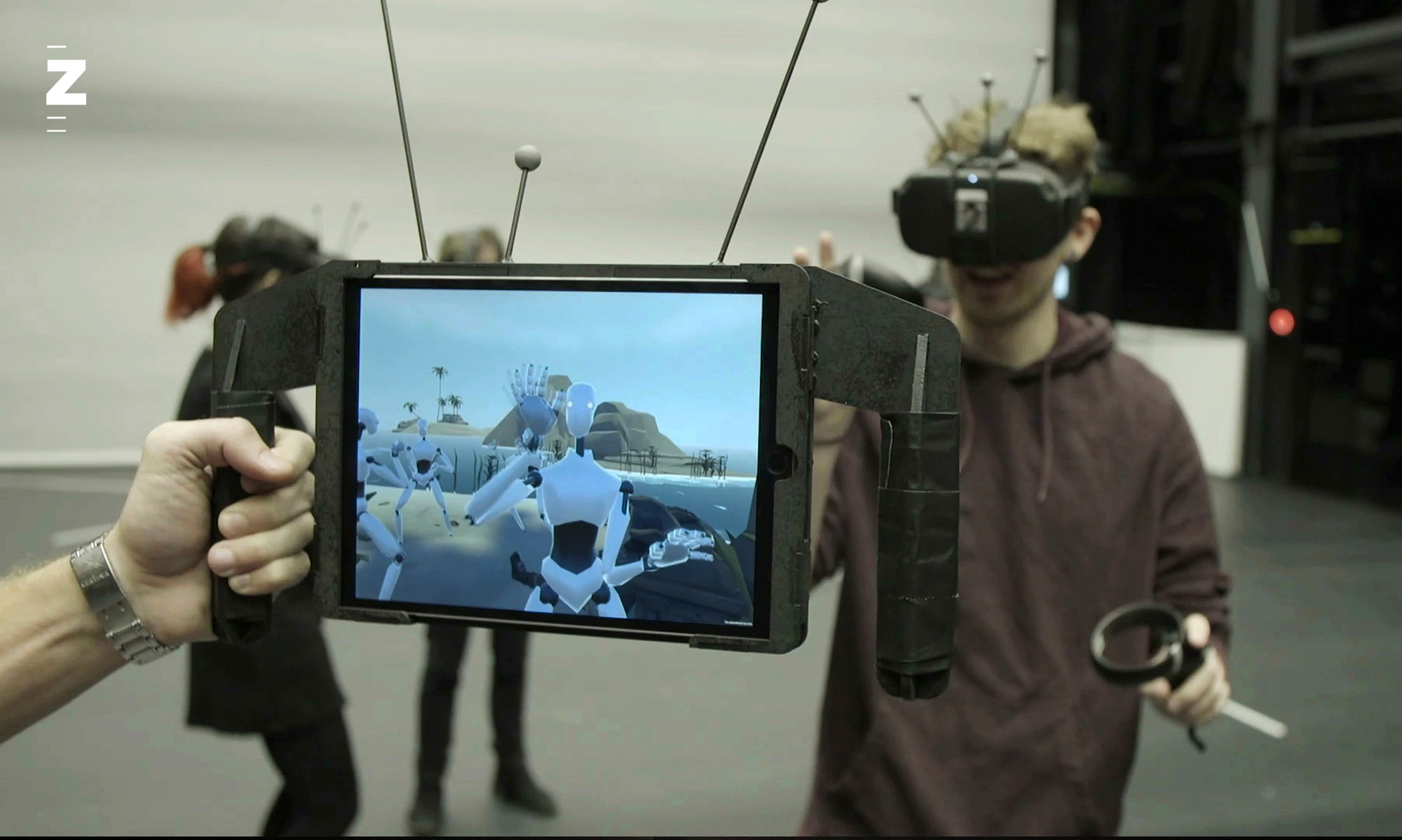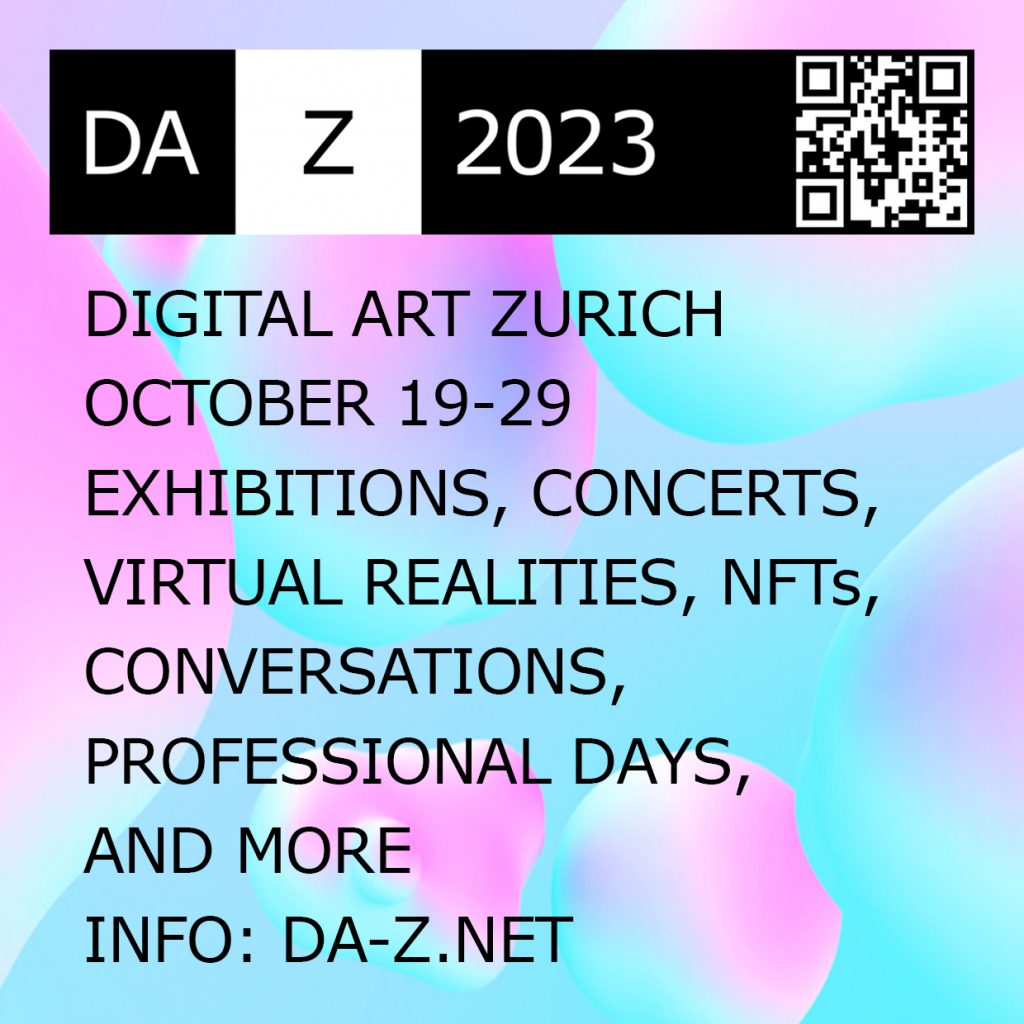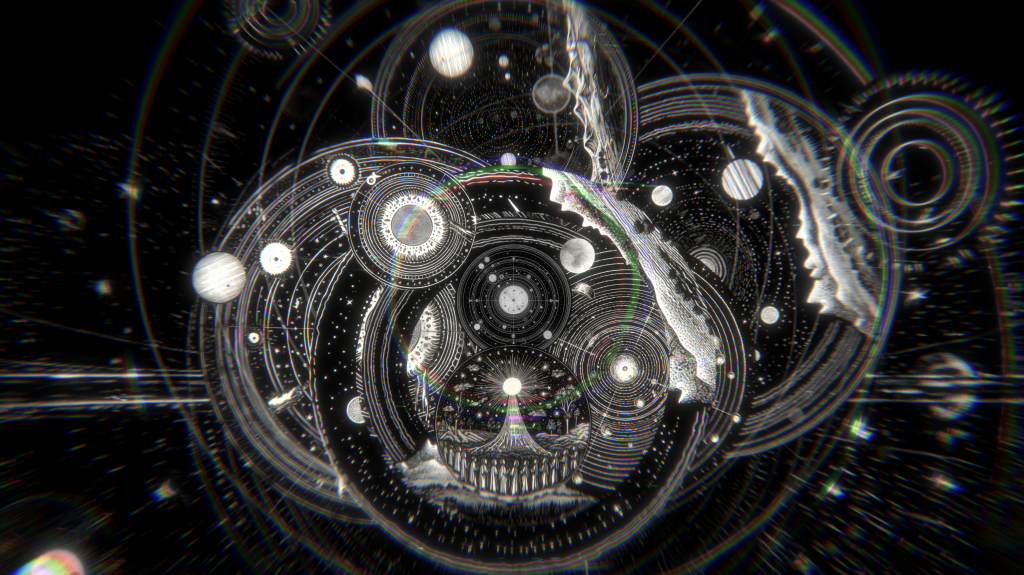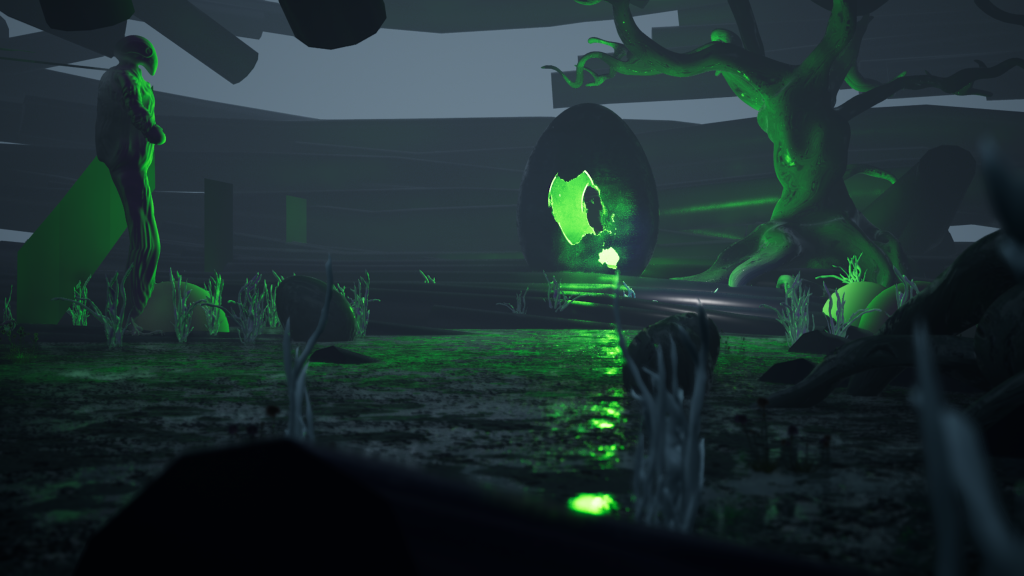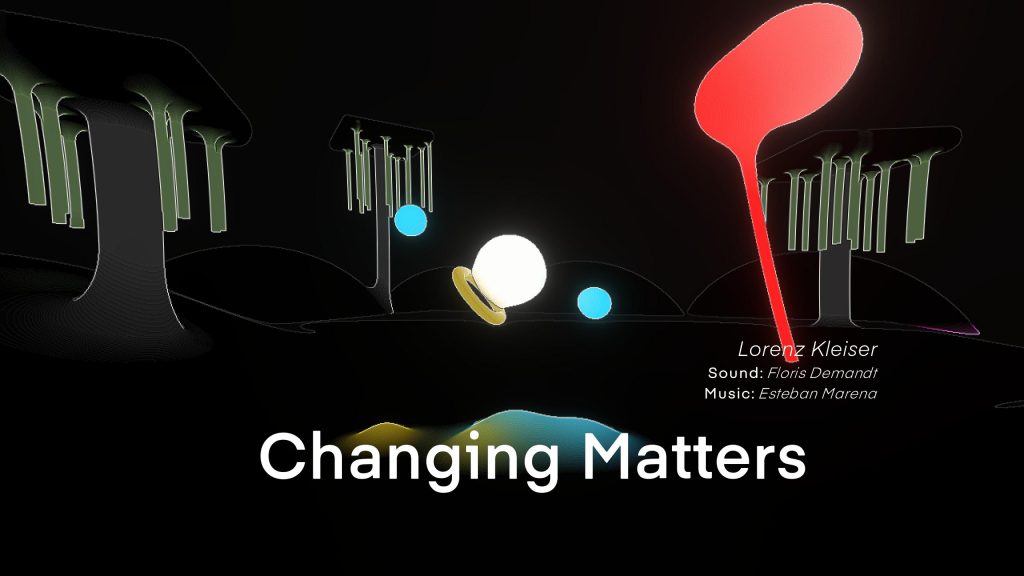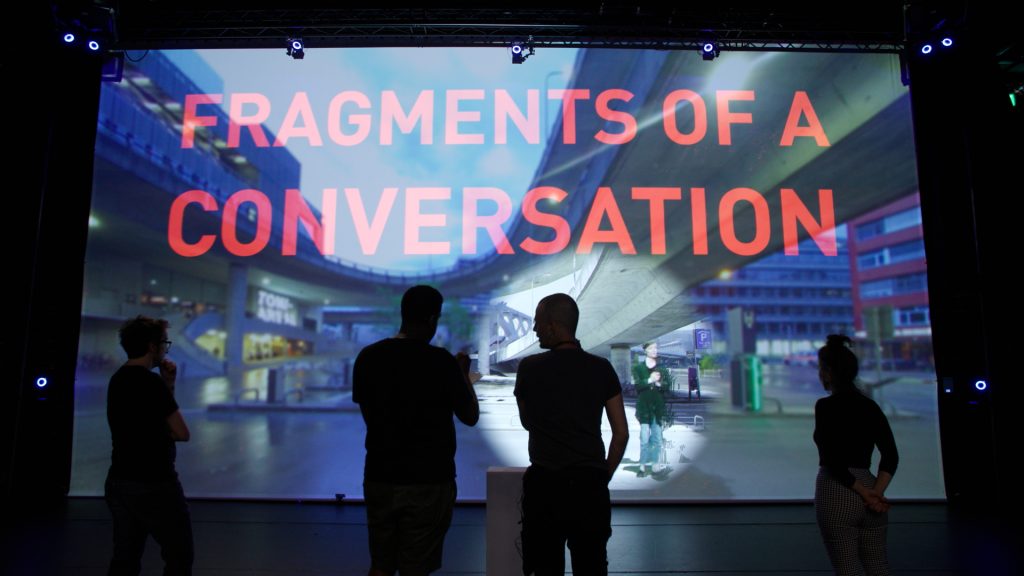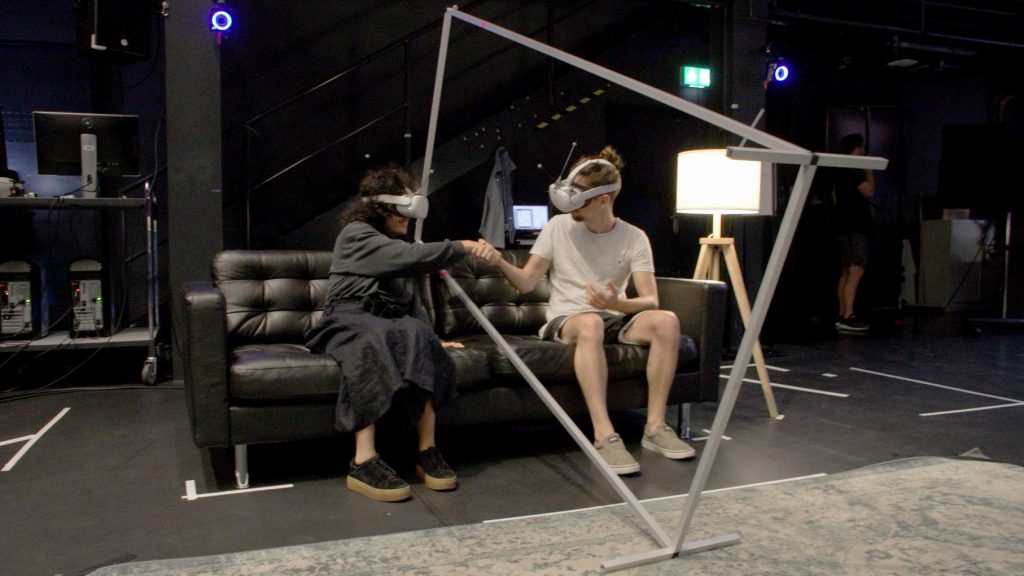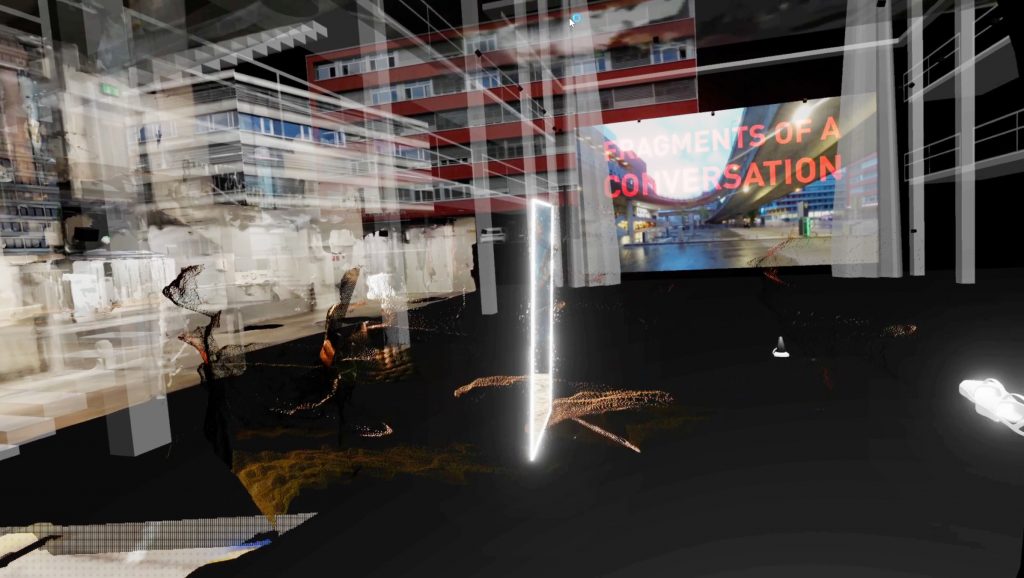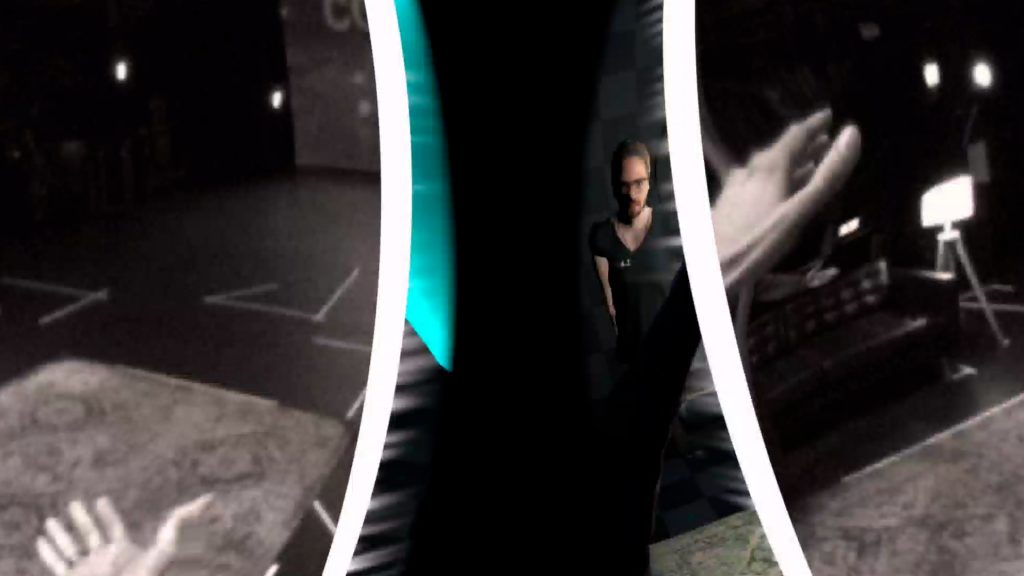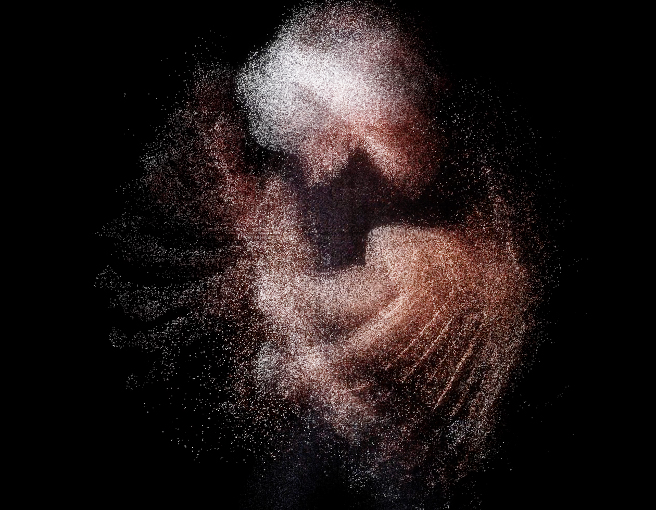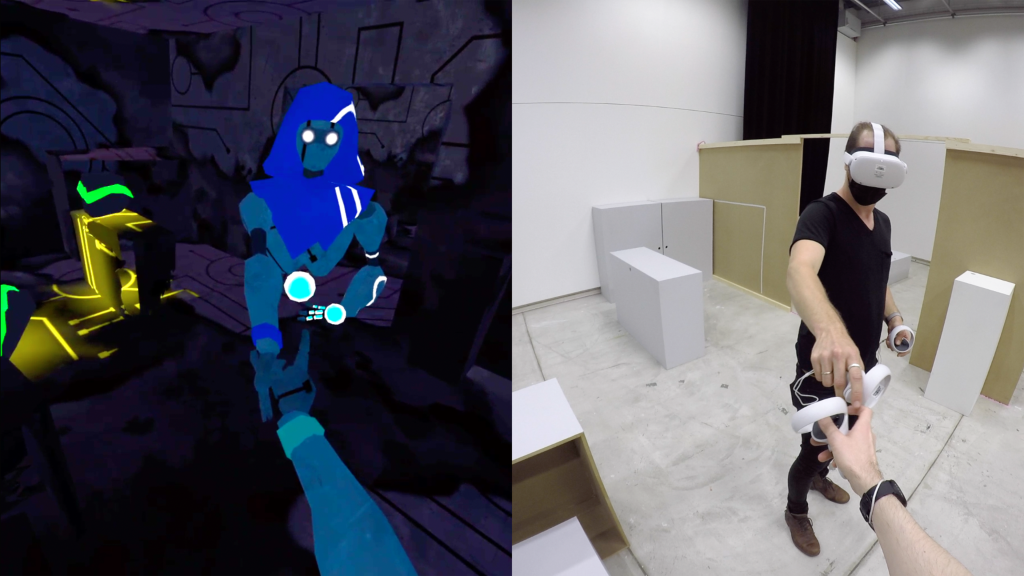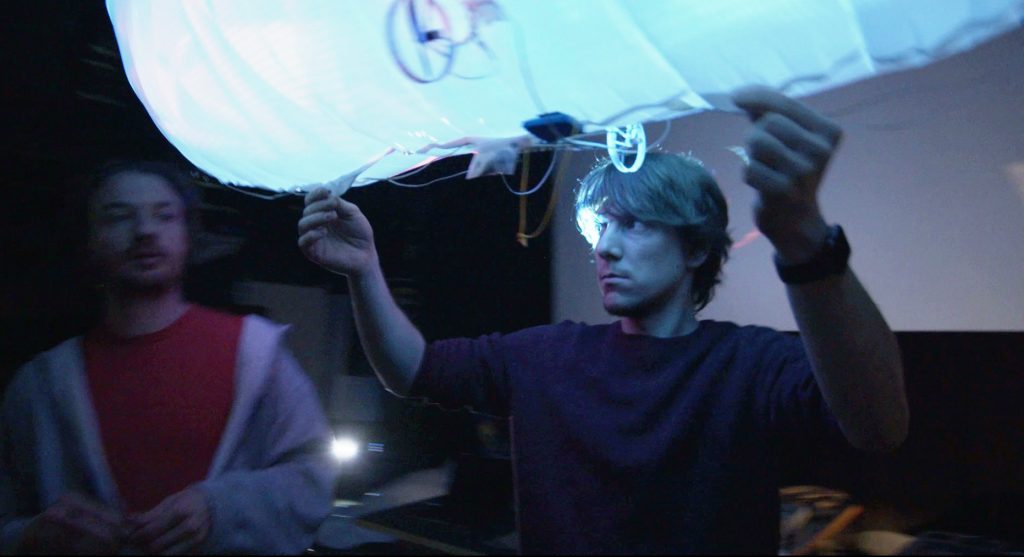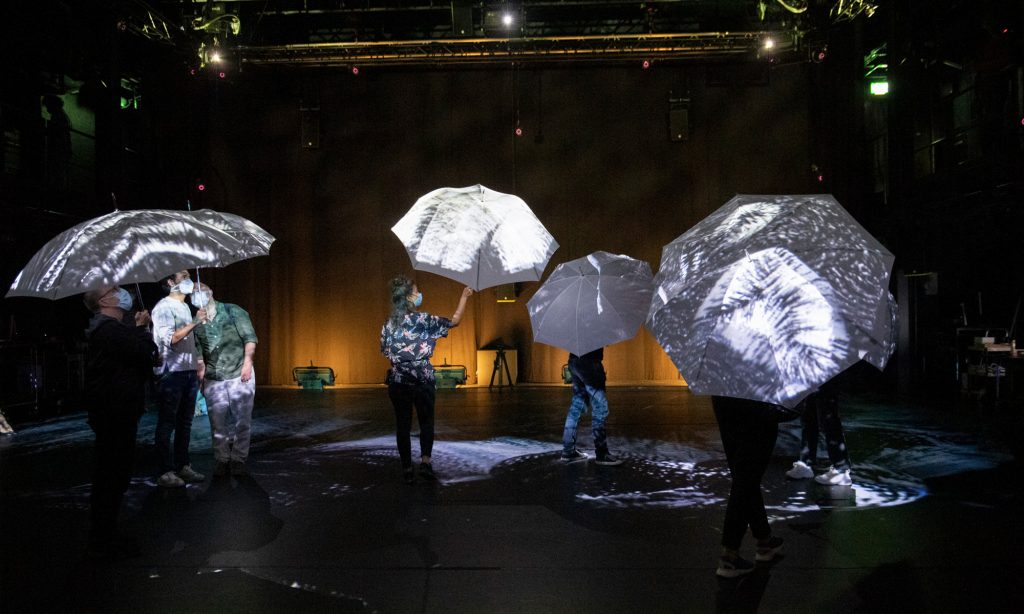
ThREE is a dance piece by the choreographer Stefanie Inhelder (Company glitch) and developed within the residency hosted by the Institute for Computer Music and Sound Technology (ICST) and the Immersive Arts Space.
Abstract:
Three generations ago, Switzerland colonized Indonesia. Not only the country, but also the”women”. As a descendant of colonial concubinage, the choreographer Stefanie Inhelder carries both sides within herself.
The audience is invited to dive into the sea between the fronts. In this in-between space we fathom the paradoxes that our ancestors have left us. Five performers move into the present with a minimalist core. Arrived we let the clear lines flow in a liquid polyphony – a decolonization of the feminine connotated body.
ThREE is an immersive piece, that embraces the audience with an octophonic soundscape and holographic visuals. Through motion capture technology, the dancers’ movements expand throughout the theater auditorium. ThREE invites the audience to let go of clear sight and sides to find ourselves in the space between.

Credits:
Stefanie Inhelder – artistic director, choreography
Javier Munoz Bravo – composition and live electronics
Stella Speziali (IAS)- visuals
Eric Larrieux (IAS) – motion capture
Anna Heinimann – performing dancer
Kuan-Ling Tsai – performing dancer
Laetitia Kohler – performing dancer
Pascale Altenburger – performing dancer
Thea Soti – performing dancer
Jiaxin Chen – dramaturgy
Andreas Zangger – historical research
Lena Schmid – scenography, costumes
Daniel Tschanz – light design
Camille Jamet – production
